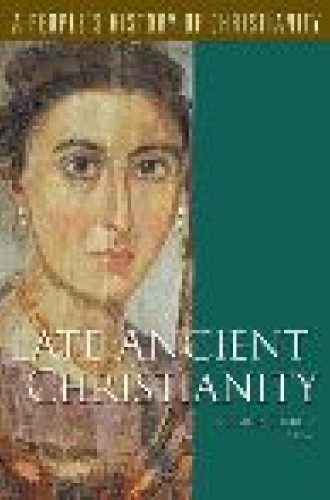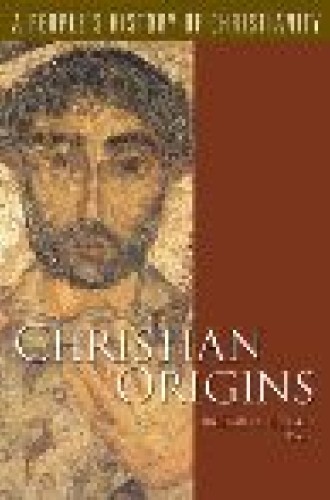Hidden history
One of the great dilemmas of contemporary historians is how to recover the history of people who left no written history of their own. How do we find out what women in second-century Edessa or Antioch were thinking about religious practices when we have writings only from men? What does it mean to write a “people’s history” for people who did not have the social advantage to write a history themselves?
Both science and history in the 21st century are marked by the study of shadows, reflections and remnants, whether they be the shadows of quarks and echoes of a big bang or the reverse reflections of men who wrote about women. This effort is among the most important historical and scientific activities of our period. Records of councils, conferences and clerics abound, but piecing together the Christian life, practice and understanding of the remaining 95 percent of people who have called themselves Christians is a special art.
A People’s History of Christianity, a projected seven-volume series with two volumes now in print, is a major effort to recover this hidden history. Series editor Denis R. Janz of Loyola University of New Orleans has assembled an impressive group of scholars to write the first two volumes. For the most part the contributors are people who have been plowing the ground of people’s history and the sociopolitical contexts of the early church for years. In the first volume (edited by Richard Horsley of the University of Massachusetts), for example, Carolyn Osiek, who has written on households and house churches, addresses “Family Matters”; William Herzog, who studies issues of justice and the oppressed, writes on peasants’ responses to Jesus; and Warren Carter, who has focused much of his scholarship on the sociopolitical contexts of the Gospel writings, discusses “Matthew’s People.”
Throughout the two volumes are excellent illustrations and sidebars that contain primary texts. Many of the illustrations are not directly by or about the common people, but they do point to their lives and rituals. Both the illustrations and the sidebars do what they are supposed to do: fill out the descriptions in the articles they accompany.
As always, periodization is an issue. Volume one deals with the New Testament material; all but one of the authors are New Testament scholars. Thus, one-seventh of the material in the series will deal with one-20th of Christian history: that of the first century. I think this is a good idea. Because Christian history can be written as the ongoing interpretation and understanding of Jesus and the Jesus material, it is especially important to be clear about the first century. The second volume ostensibly deals with the Roman imperial period, but this is broadly interpreted by the authors to include Byzantine-period material where appropriate.
Although many of the authors make reference to the Constantinian revolution that took place both in official Christianity (elitist is the operative word) and on the popular level, neither the Edict of Toleration (313) nor the Council of Nicaea (325) is the dividing line used in these volumes. However, it appears that traditional and official (elitist) divisions will be used in later installments. A volume on the Reformation is due out this fall, but because scholars no longer regard Christianity as a Western religion, the Reformation division is becoming less important. From a people’s perspective, the volume on the 16th century would more appropriately be titled “Early Christian Globalization.” This volume would then focus primarily on the redevelopment of Christianity in Africa and Asia and its new development in the Americas, and only secondarily on Christian infighting in Europe.
The authorship and geographical scope of the first two volumes seems insufficiently representative. It would have been helpful to include the work of African, Asian and Latin American historians. Most of the authors focus on and write from a North Atlantic perspective that misrepresents Christianity as a European and Middle Eastern religion. A few chapters depart from this tendency: Robin Jensen’s excellent article on “Baptismal Rites and Architecture” focuses on North Africa, and other chapters mention Syriac material in passing. These two volumes are about Christianity in the Roman Empire only, even though Christianity grew rapidly in India and in the empires of Ethiopia, Nubia and Persia during the period of these two volumes.
The authors of these two volumes are very concerned about method—so concerned that at times the methodological apologetic is overwhelming. Janz’s foreword in each volume clearly places the work in the context of the turn by many historians from church history to the history of Christianity; from history from above to history from below; from Rankean and great-deeds history to the history of the forgotten 95 percent; from “hierarchical-institutional-bureaucratic corporation” history to the history of the “ordinary” faithful people.
This discussion is well done, and sufficient. But then a number of the authors also explain what is new about what they are doing. Neil Elliot takes five pages out of 20 to tell us that he is writing about class struggle and not about elites; Warren Carter has a section titled “The Challenge of People’s History”; and the second volume starts with the 23-page “Introduction: Shifting the Focus of History,” by Virginia Burrus and Rebecca Lyman. Other authors just get on with the task and do a wonderful job. The chapter on “Children’s Play as Social Ritual,” by Cornelia B. Horn, is refreshing both in this regard and because it helps to bring “the least of these” back to historical discourse.
Finally, many of the authors seem to believe that Christian writings from the nonelitist perspective must all be about political and economic resistance to Rome. They appear to assume a rigid dichotomy between the oppressor and the oppressed, the elite and the poor. The illustrations, mostly of artifacts from elite Christians, prove that the producers of these volumes accept that there is some continuity and community between the poor and the rich, but only a few of the authors appear to understand the complexity of economic relationships—among them Elizabeth Clark, who writes that “ascetic practice also created a new elite within Christianity,” and Carolyn Osiek, who carefully navigates the troubling ideological dichotomy: “It is not a case of elite versus nonelite ideals. There is no reason to assume that lower-class families were any less devoted to each other and to preserving family unity.”
I plan to use some of these groundbreaking essays in teaching early Christian history, but the volumes’ exclusion of African and Asian Christianity and the authors’ dualistic thinking about social constructs and preoccupation with method will limit what I use. Hopefully the non-Western world will appear later in this series; we will have to wait and see.






